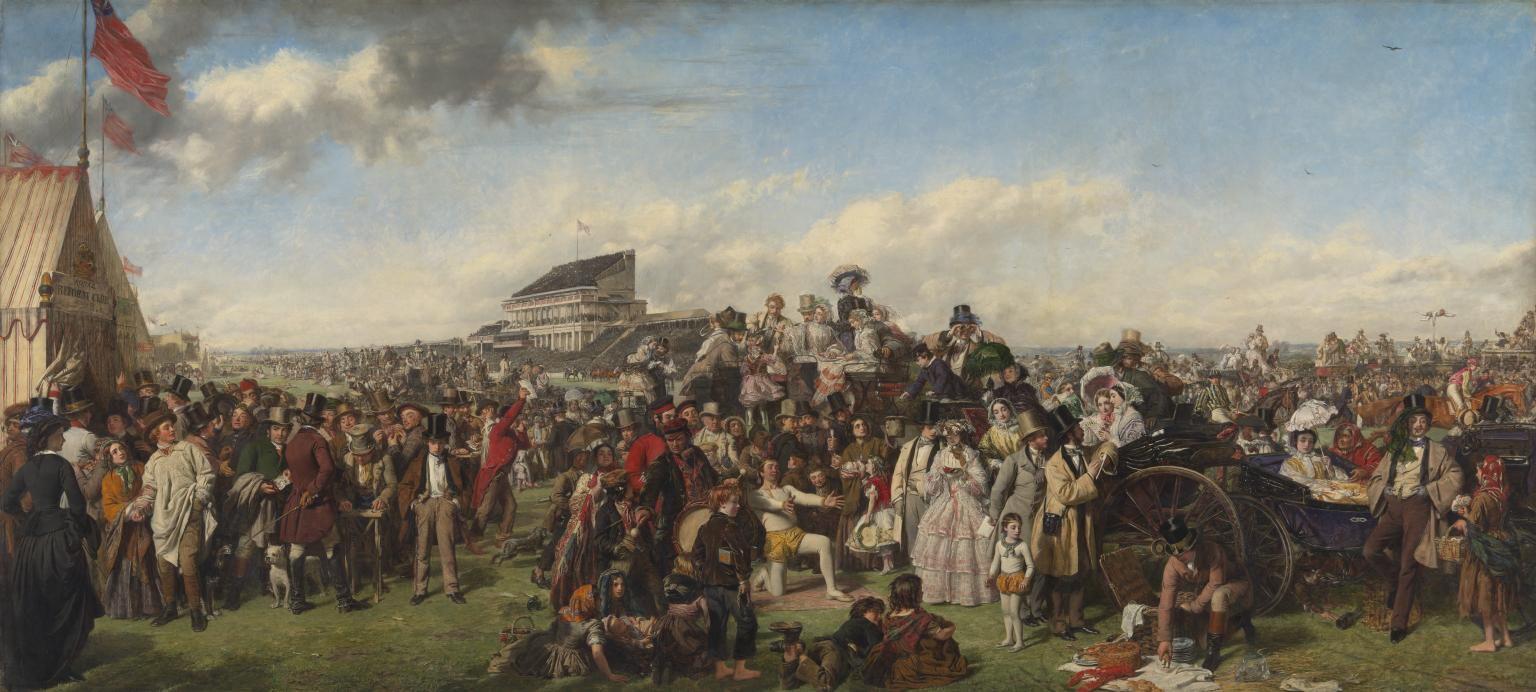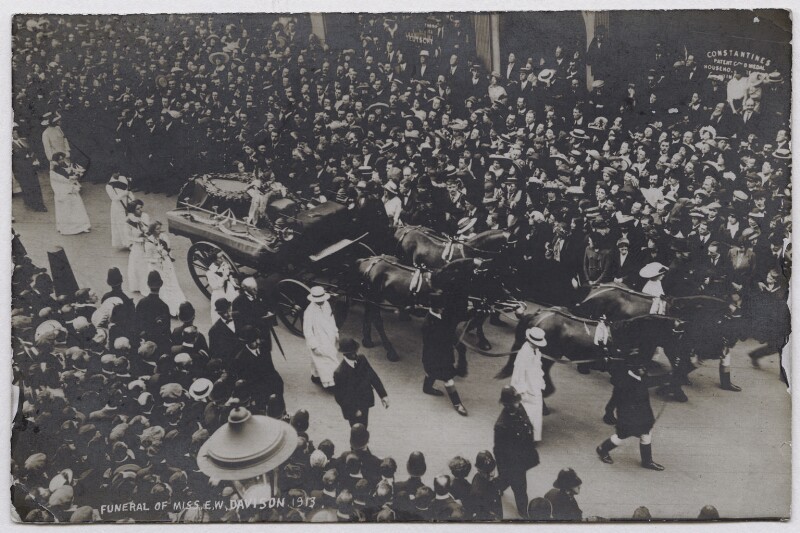

















June 5/13
Miss Davison,
I am glad to hear you are in Hospital, I hope you suffer torture until you die. You idiot.
I consider you are a Person unworthy of existence in this world, considering what you have done, I should like the opportunity of starving and beating you to a pulp. “You cat”.
I hope you live in torture a few years, as an example to your confederation.
Why don’t your People find an asylum for you?
Yours
An Englishman
LSE Library, 7EWD/A/7/5
Since 1780, the Epsom Derby has been one of the UK’s top horse races, taking place in June each year.
Since 1780, the Epsom Derby has been one of the UK’s top horse races, taking place in June each year.
Notable visitors include the author Charles Dickens and the artist William Powell Frith, who painted this monumental cross-section of society.
The Derby Day, 1856–8, William Powell Frith. Bequeathed by Jacob Bell. Photo: Tate
However, on 4 June 1913, the race was the setting for a terrible tragedy, a brave act of political activism, or a foolhardy attack – depending on who you ask.

At the final corner of the course before the home straight, the militant suffragette Emily Wilding Davison (1872 – 1913) ducked under the barrier and walked onto the track into the midst of the on-coming horses. In her possession were two flags of the Women’s Social and Political Union (WSPU), founded by Emmeline Pankhurst in 1903 to campaign for the parliamentary vote for women.
Possibly Davison intended to pin one on King George V’s horse Anmer. Grainy footage captures her colliding with the horse and Davison, horse and jockey all falling to the ground.
The public reaction quickly turned to fury, including hate mail sent to Davison in hospital. Davison never read the letters, as she never regained consciousness and died within four days.
The public reaction quickly turned to fury, including hate mail sent to Davison in hospital. Davison never read the letters, as she never regained consciousness and died within four days.
Despite the vitriol, tens of thousands of people lined up to watch her coffin in a procession through London, accompanied by more than 5,000 suffragettes.
Procession of Emily Davison’s funeral, Ferdinand Louis Kehrhahn & Co postcard print, June 1913 NPG x45196 © National Portrait Gallery, London
Procession of Emily Davison’s funeral, Ferdinand Louis Kehrhahn & Co, postcard print, June 1913, NPG x45196 © National Portrait Gallery, London

Davison’s last article ‘The Price of Liberty’ was published 28 May 1913.
In it she wrote: “The true militant suffragette is an epitome of the determination of women to possess their own souls.”
